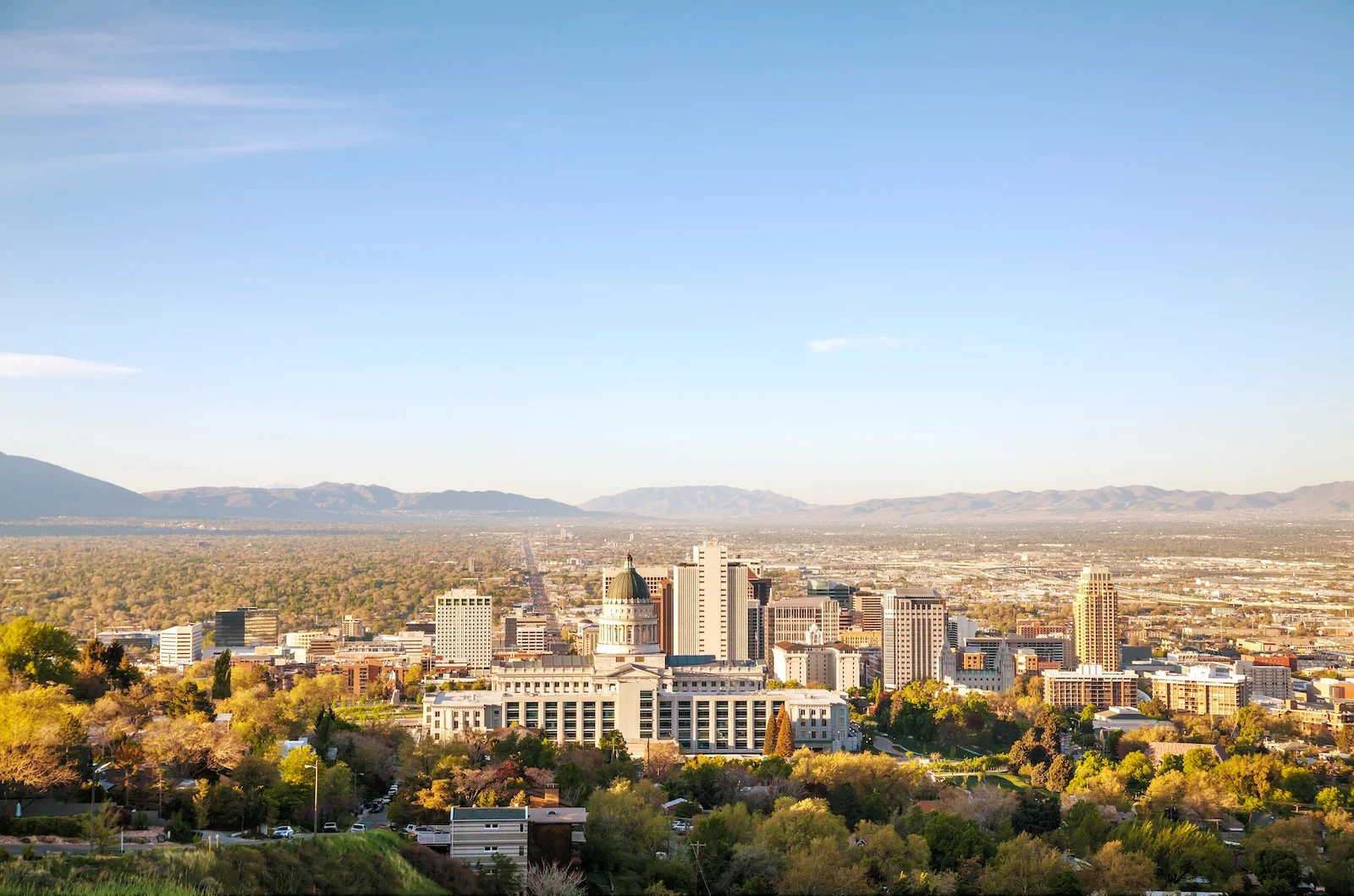Utahns love Utah for a lot of reasons. The pollution in the air is not one of them. By far, air quality is the number one thing Utahns dislike about where they live (2014 Utah Values Study, pg. 43). For most of the year, Utah’s air is clean. However, for some periods in the summer and particularly in the winter, pollution levels rise to unacceptable levels in many of our mountain valleys and we see “red air days” that exceed federal standards. So what’s being done to address our poor air quality? The answer might surprise you: A lot. Expect the air to get cleaner over the next few years. That doesn’t mean we won’t have inversions—those are a weather phenomenon that we can’t control—or even that we won’t have fog. But it does mean we’ll be breathing fewer fine particulates and ozone gases, the damaging stuff that we don’t want hanging around our lungs. In 2012, Envision Utah, at the request of Governor Gary Herbert, brought together a diverse group of experts and stakeholders known as the Clean Air Action Team. That group, with the help of Envision Utah and the Utah Division of Air Quality, modeled the impacts of different strategies, developed a list of actions we could take, and brought that list to the public. Three quarters of Utahns chose a package of strategies that would aggressively reduce pollution. Here are some of the Clean Air Action Team’s primary recommendations and an update on what’s happening:
Retool refineries to produce lower-sulfur fuel as soon as possible. Yes, our refineries emit air pollution, but it’s a smaller amount than you think (around 3% of what leads to our bad air). Far more important is the sulfur content of the fuel those refineries produce. Currently automobiles are responsible for about half our emissions, but when you put low-sulfur gasoline in your car the pollution control equipment works much better, leading to significantly reduced emissions. So far, Tesoro, Sinclair, Silver Eagle, and Chevron have all committed to produce low-sulfur fuel, also known as Tier 3 fuel, which leaves only two who haven’t committed.
Reduce emissions from existing and new homes and other buildings. As cars get cleaner and our population grows, new homes and buildings will quickly become the main source of air pollution along the Wasatch Front. Most people wouldn’t consider their home a source of air pollution, but every time we burn natural gas, we emit gases that contribute to poor air quality. In other words, your home probably has two smokestacks: one for the furnace and one for the water heater. Natural gas is a LOT cleaner than wood or coal, but there are enough buildings on the Wasatch Front and other places that it will become a large source of air pollution in the years to come. In response to the Clean Air Action Team’s recommendation, a new rule has been put in place that will require most new water heaters to be ultra-low emission, which will reduce their emissions by 70%, starting next year. In addition, many builders are significantly improving the energy efficiency of what they build. For example, Ivory Homes, Utah’s largest homebuilder, has increased the thickness of the walls in new homes from four inches to six inches. These are significant steps that will pay dividends for decades to come. There are also programs in place to help those who still need to burn wood for heating convert to natural gas.
Educate the public about the most effective steps Utahns can take to reduce emissions. There are many things you and I can do to reduce our emissions. Envision Utah helped Provo develop a clean air toolkit that describes what residents, the city, employers, and others can do. UCAIR, a non-profit dedicated to helping people understand the voluntary actions they can take, is conducting extensive outreach every year to make sure people know what they can do. The Salt Lake Chamber is challenging businesses to reduce their emissions and championing clean air.
Increase the convenience of driving less and traveling without a car. How we design our communities and infrastructure has a significant impact on whether people can conveniently and safely get around without a car. In Utah, we’ve built 140 miles of passenger rail, and since 2010 a lot of that new growth has happened within a half mile of a rail station: almost half of all multi-family housing units, more than a third of office development, and just under a third of new retail. That means it’s easy for people to walk or bike to a rail stop and reach a variety of destinations.
Shift to driving cleaner vehicles as quickly as possible. Every new car has a smog rating that ranges from 1 to 10. A higher number is cleaner—a lot cleaner. A car that scores a 10 has no tailpipe emissions (e.g., an electric vehicle), but just going from a 5 to an 8 can reduce your emissions by as much as 80%. Think about that. That has almost the same impact as walking 80% of the time you go somewhere. Federal regulations known as Tier 3 will gradually require new cars to be cleaner, until most new cars by 2025 rate an 8 or more. That’s great news! But you don’t have to wait—the next time you buy a new car, choose the highest smog rating you can. After all, that car is likely to stay on the road in Utah for many years, even if you sell it to someone else at some point.
Are we all doing a little more than you thought? All of these steps will significantly reduce our emissions and clean our air. There’s plenty of work to be done, but that doesn’t mean we shouldn’t celebrate our successes.


